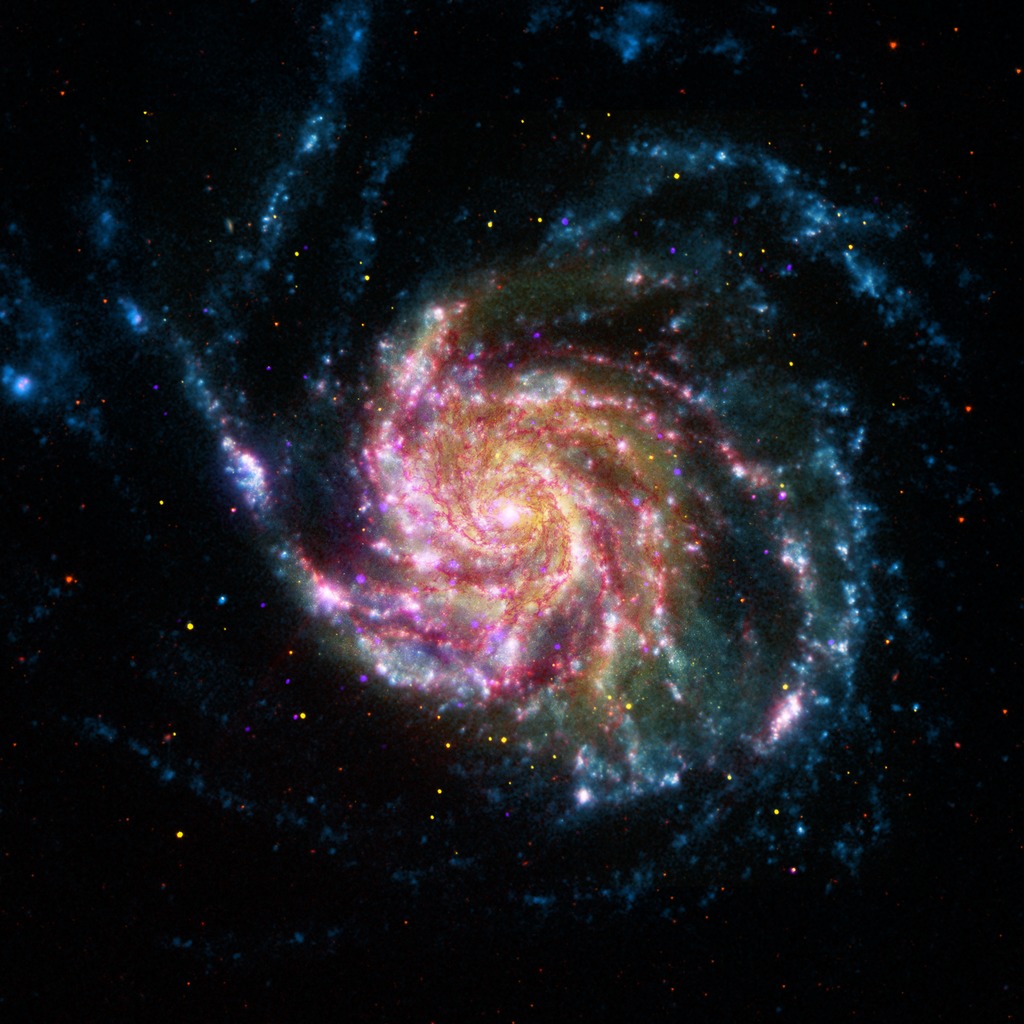
Credit: NASA, ESA, CXC, JPL, Caltech and STScI
Observation • May 23rd, 2012 • sig12-005
sig12-005
This image of the Pinwheel Galaxy, or M101, combines data in the infrared, visible, ultraviolet and x-rays from four of NASAs space telescopes. This multi-spectral view shows that both young and old stars are evenly distributed along M101s tightly-wound spiral arms. Such composite images allow astronomers to see how features in one part of the spectrum match up with those seen in other parts. It is like seeing with a regular camera, an ultraviolet camera, night-vision goggles and X-Ray vision, all at once!
The Pinwheel Galaxy is in the constellation of Ursa Major (also known as the Big Dipper). It is about 70% larger than our own Milky Way Galaxy, with a diameter of about 170,000 light years, and sits at a distance of 21 million light years from Earth. This means that the light were seeing in this image left the Pinwheel Galaxy about 21 million years ago - many millions of years before humans ever walked the Earth.
The red colors in the image show infrared light, as seen by the Spitzer Space Telescope. These areas show the heat emitted by dusty lanes in the galaxy, where stars are forming.
The yellow component is visible light, observed by the Hubble Space Telescope. Most of this light comes from stars, and they trace the same spiral structure as the dust lanes seen in the infrared.
The blue areas are ultraviolet light, given out by hot, young stars that formed about 1 million years ago. The Galaxy Evolution Explorer (GALEX) captured this component of the image.
Finally, the hottest areas are shown in purple, where the Chandra X-ray observatory observed the X-ray emission from exploded stars, million-degree gas, and material colliding around black holes.
About the Object
- Name
- Pinwheel Galaxy • Messier 101 • M101
- Type
- Galaxy > Type > Spiral
- Galaxy > Activity > Normal
- Distance
- 27,000,000 Light Years
- Redshift
- 0.0008
Color Mapping
| Band | Wavelength | Telescope |
| X-ray | 1.5 keV | Chandra ACIS |
| UV | 150 nm | GALEX |
| Optical | 435 nm | Hubble ACS |
| Infrared | 8.0 µm | Spitzer IRAC |
Astrometrics
- Position ()
- RA =14h 3m 12.4s
- Dec = 54° 20' 55.0"
- Field of View
- 23.4 x 23.4 arcminutes
- Orientation
- North is 0.1° left of vertical



